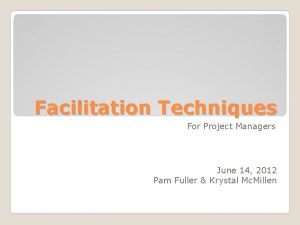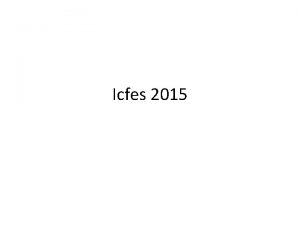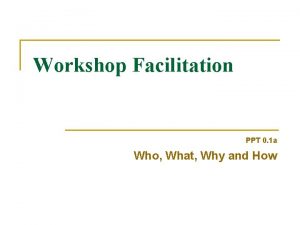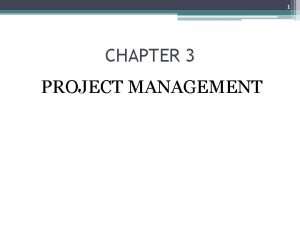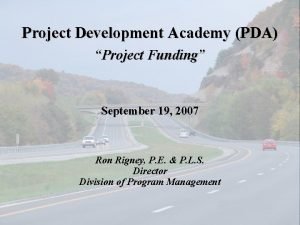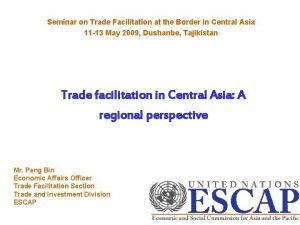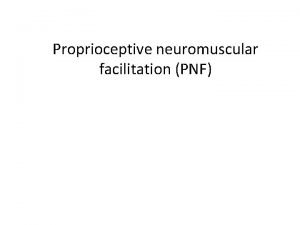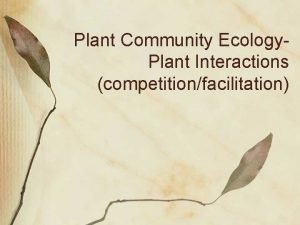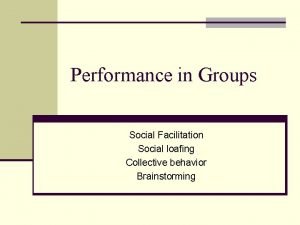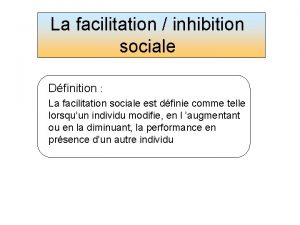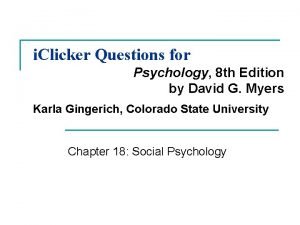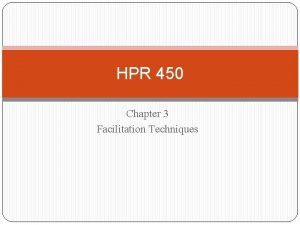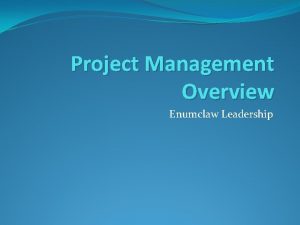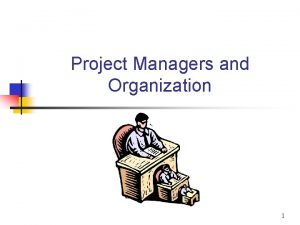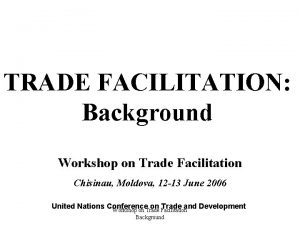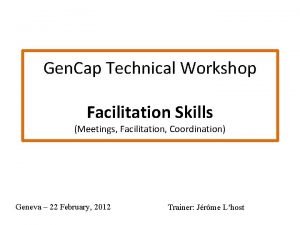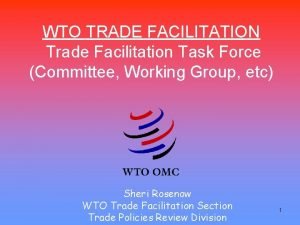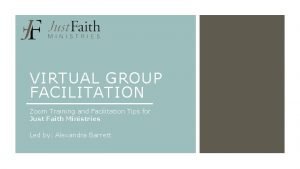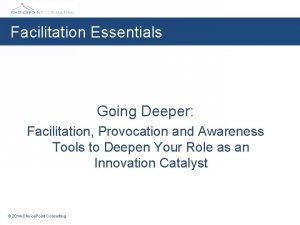Facilitation Techniques For Project Managers June 14 2012















- Slides: 15

Facilitation Techniques For Project Managers June 14, 2012 Pam Fuller & Krystal Mc. Millen

“When a man is sufficiently motivated, discipline will take care of itself. ” ~Sir Alexander Paterson On Great Facilitation

�Sponsor Meeting �Open a Session ◦ Introduction (IEEI) ◦ 4 Magic Flip Charts �Project Planning Meeting �Project Status Meeting �Facilitation Techniques ◦ Brainstorm vs. List ◦ Starting vs. Reacting Questions �Close a Session Concepts

Five P’s of Preparation Purpose Why are we doing project? Product What are the key results to be achieved? Participants Who should be involved? Probable Issues What might need to be discussed to create product and achieve purpose? Process What are the Sponsor’s expectations around the steps to be taken to achieve purpose? Sponsor Meeting

�Set Up Ahead �Use Gathering Period �Kick-off Promptly �Effectively Deliver Opening (I-E-E-I) ◦ Inform – Agenda ◦ Excite – Benefits to Them ◦ Empower – Their Role ◦ Involve – Their Objectives ◦ Memorize and Use Best Presentation Techniques �Review Purpose & Participant Objectives �Review Agenda �Define “ 4 Magic Flip Charts” ◦ Purpose/Agenda; Ground Rules; Parking Lot; Decisions/Actions Open a Session

OBJECTIVE & AGENDA �OBJECTIVE: Review facilitation techniques to effectively run project management meetings. �AGENDA: ◦ ◦ ◦ Welcome & Introductions 4 Magic Flip Charts Project Planning Meeting Project Status Meeting Exercises Closing Flip Chart #1: Objective (Purpose)/Agenda

Ground Rules �e. Manners �Respect Current Speaker �Defer Judgment �Headline First �Be on Time �Suspend Disbelief �Consensus = “I can live with support it” Flip Chart #2: Ground Rules it and I can

Parking Lot �Idea #1 – need more info �Idea #2 – good idea but not relevant now Flip Chart #3: Parking Lot

Decisions/Actions �Krystal will check by Friday with “Leadership Strategies” to see if we can distribute Project Planning and Status Meeting Templates and report back to group. Flipchart #4: Decisions/Actions

�Open/Introduction �Define Project Purpose & Objectives �Determine Deliverables & Scope �Identify Critical Success Factors �Develop Overall Approach �Define Resources, Durations & Dependencies �Define the Schedule �Identify Risks & Contingencies �Document Management Issues �Review & Close Project Planning Meeting

�Open/Introduction �Restate Project Objective �Review Past Actions Review �Identify Issue(s) �Summarize (schedule, budget & critical issues) �Plan Next Period �Review & Close Project Status Meeting

Brainstorm List Get Large Number of Ideas in Short Time Get the Right Ideas Record Before Reacting Clear Objective Great Starting Question Time Limit Reacting Questions Prohibit Judgment – record Get Consensus Encourage Creativity Keep Moving Go for Quantity Always Group/Prioritize After Facilitation Techniques: Brainstorm vs. List

Great Starting Questions Reacting Questions Image Building Phrase Direct & Indirect Probe: Why is that important? Is the reason that’s important because…? Extend the Image Redirection: That’s a good point. Can we put that on the issues list/Parking Lot? Ask Direct Question Playback: It sounds like what you’re saying is…is that right? Leading Question: Are there solutions in the area of…? Prompt Question: What else…? Tag Question: That’s important, isn’t it? Float an Idea: What about…? What are the benefits…? Facilitation Techniques: Great Starting vs. Reacting ? s

�Request Time Extensions if Needed �Review “ 4 Magic Flip Charts” �Review Participant Objectives �Ask Participants to Evaluate �Close and Set the Stage – use partial close as needed (don’t evaluate or debrief) �Debrief with Planning Team & Sponsor �Document Session Results Close a Session

� Preparing for Success ◦ Method, People, Logistics, Process � Getting the Session Started ◦ I-E-E-I, Ground Rules, Parking Boards � Focusing the Group ◦ Checkpoint, Warm-up, Activities, Break Outs � The Power of the Pen ◦ Make it theirs, What not to do… � Information Gathering ◦ Question Types � Consensus Building ◦ 5 Strategies: Delineation, Strengths/Weaknesses, Merging Alternatives, Ranking/Weighting, Converging Solutions � Keeping the Energy High ◦ Opening, Recharge � Closing the Session ◦ Review, Evaluate, Close, Debrief 9 Facilitation Competencies
 Facilitation techniques in project management
Facilitation techniques in project management Elephant riding in phuket respuestas
Elephant riding in phuket respuestas January 2012 chemistry regents
January 2012 chemistry regents Group facilitation skills ppt
Group facilitation skills ppt Project managers typically perform the tasks of
Project managers typically perform the tasks of Kytc project managers toolbox
Kytc project managers toolbox Self fulfilling prophecy example
Self fulfilling prophecy example Business facilitation program visa
Business facilitation program visa Zajonc drive theory
Zajonc drive theory Social trap example
Social trap example Trade facilitation meaning
Trade facilitation meaning Pnf training definition
Pnf training definition Facilitation among species
Facilitation among species Social facilitation vs social loafing
Social facilitation vs social loafing Inhibition sociale
Inhibition sociale Although frieda is typically very reserved as
Although frieda is typically very reserved as
